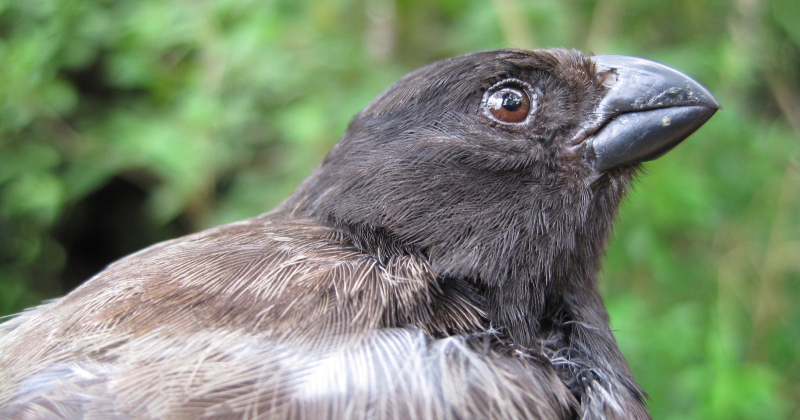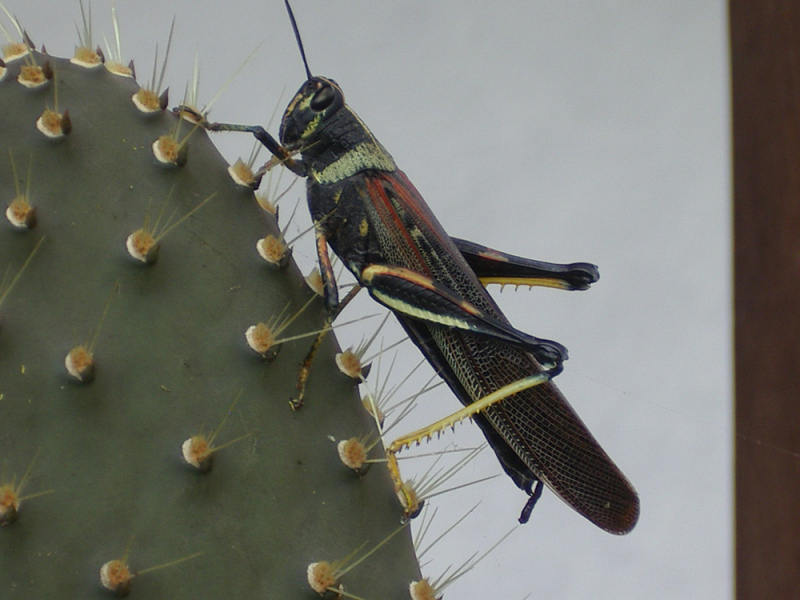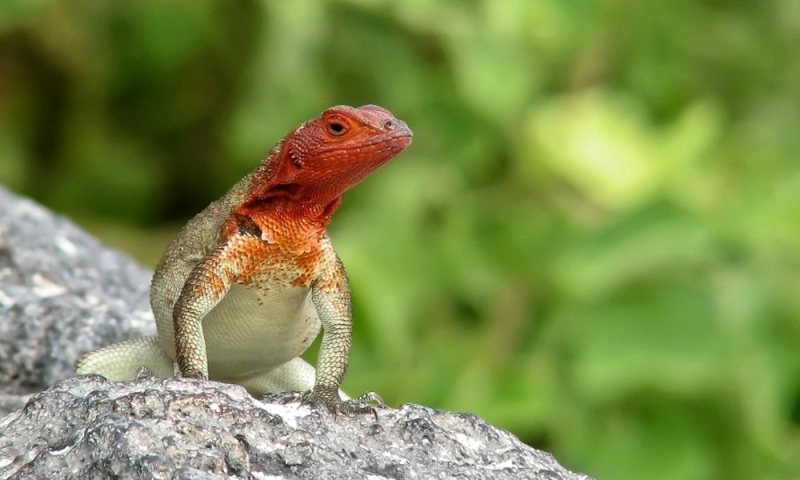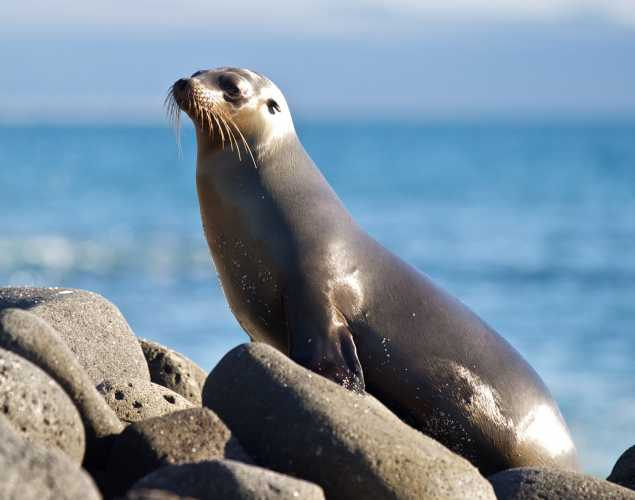Top 11 Galapagos' Most Iconic Animals
Some of the most breathtaking and unusual fauna in the world may be seen on the Galapagos Islands, which are off the west coast of South America. Because of ... read more...the absence of larger natural predators, Galapagos fauna is particularly unique and highly domesticated. There are numerous iconic animal species found on these volcanic islands. Here is a list of the most iconic animals in the Galapagos, let's find out!
-
Seven of the Galápagos Islands are home to the Galápagos tortoise. Subspecies and populations have different shell sizes and shapes. The tortoises are larger on islands with wet highlands and have domed shells and short necks; whereas, on islands with dry lowlands, they are smaller and have "saddleback" shells and long necks. From approximately 250,000 in the 16th century to a low of about 15,000 in the 1970s, the number of tortoises decreased. The introduction of non-native animals to the islands, including rats, goats, and pigs, as well as overexploitation of the subspecies for meat and oil, and habitat clearing for agriculture, and these factors contributed to the decline.
The tortoises have a sizable bony shell that is either grey or dull brown in appearance. The ribs and shell plates combine to form a robust protective framework that is a part of the skeleton. These sluggish animals' shells can develop lichens. Despite the fact that the annual growth bands are useless for figuring out an animal's age since the outer layers are gradually worn off, turtles retain a distinctive scute (shell segment) pattern on their shells throughout their lives. For protection, a tortoise can retract its head, neck, and forelimbs into its shell. Large and stumpy legs with rough scales and dry, scaly skin are present. The back legs feature four claws, whereas the front legs have five.

Via: Euronews 
Via: Earth.Org -
The Galápagos Islands are the only place where the marine iguana (Amblyrhynchus cristatus), commonly known as the sea iguana, saltwater iguana, or Galápagos marine iguana, may be found (Ecuador). It is a marine reptile that is distinct from other contemporary lizards in that it can forage in the sea for algae, which accounts for approximately all of its diet. The only living lizard that regularly spends time in a marine environment is the marine iguana. While females and smaller males forage in the intertidal zone at low tide, large males can dive to reach this food supply.
They can be found in marshes, mangrove swamps, and beaches, although they typically live in colonies on rocky coasts where they bask after swimming in relatively cold water or the intertidal zone. Smaller men have various methods of mating while larger males only defend their territories for a brief time. After mating, the female creates a nest hole in the ground, lays her eggs, and then waits a few months for them to hatch on their own.

Via: World Wildlife Fund 
Via: World Wildlife Fund -
The western islands of the Galapagos Archipelago are where you'll often see Galapagos fur seals. They are native to the Islands and are listed as endangered by the IUCN due to their declining population size. They have a fur coat that is grayish-brown in color and are the smallest members of the otariid (ear seal) family. The species' adult males weigh 64 kg and measure an average length of 1.5 m. The average length and mass of the females are 1.2 meters and 28 kg, respectively.
They resemble the Galapagos sea lion in appearance, but there are certain crucial distinctions that allow you to tell them apart. Typically, fur seals have smaller, wider, and shorter skulls. Fur seals have protruding ears and eyes that are larger than those of sea lions, as well as larger front flippers that help them scale more difficult terrain. Their coat, which is significantly thicker than the sea lions, is likely the most noticeable difference.
Contrary to popular belief, the Galapagos fur seal population is actually rather comparable to that of the Galapagos sea lion. Simply said, tourists are less likely to observe them since they prefer shadier, rockier regions that are less likely to be visited by tourists.

Via: Finch Bay Galapagos 
Via: Wikipedia -
The Galápagos Islands in Ecuador are home to the only population of the Galápagos penguin (Spheniscus mendiculus). The only penguin found north of the equator is this one. Most inhabit Fernandina Island and the west coast of Isabela Island. Even though it is located in a tropical latitude, it may thrive because of the chilly waters of the Humboldt and Cromwell Currents. One of the species of banded penguins, the other species of which are primarily found along the shores of Africa and South America's major landmass, is the Galápagos penguin. One of the tiniest penguin species in existence. The heated climate in which the Galápagos penguins live has led to the development of cooling strategies.
They have white bellies and a stripe that runs from their eyes down to their neck and chin. Their back, flippers, and head feathers are all black. Each penguin only has one partner and breeds continuously. As a defense against predators and the tough environment, their nests are generally in caves and fissures. The average lifespan of a Galápagos penguin is 15 to 20 years, although because of predation, its longevity may be drastically shortened in the wild.

Via: Encyclopedia Britannica 
Via: World Wildlife Fund -
The Galapagos hawk is the only diurnal raptor of the Galapagos Islands. Their black coloring and big wings made them easy to recognize. Their wingspan is 47 inches, and their body length can reach 27 inches. In comparison to female Galapagos haws, men are often smaller. They live on the majority of the Galapagos Islands. However, there are just 130 confirmed breeding territories in Galapagos, making them a relatively rare species.
Galapagos haws have powerful eyes, sharp hooked beaks, and very strong legs. They travel in packs of two or three to hunt. They can easily pick up rotting carcasses because of their powerful legs and beaks. They frequently take eggs from other birds' nests. They have no predators in the wild. The main components of the Galapagos hawk's diet are lizards, snakes, and rodents.
Via: Wikipedia 
Via: eBird -
The only Diomedeidae bird found in the tropics is the waved albatross (Phoebastria irrorata), popularly known as the Galapagos albatross. The waved albatross derives its name from the wave-like pattern of the feathers on adult birds. They travel a straight route of around 1,000 kilometers (620 miles) to a single spot off the coast of Peru to forage. These birds mostly live along the shores of Ecuador and Peru during the non-breeding season.
These albatrosses are of medium size, with a length of 80 to 90 cm (31 to 35 in) and a wingspan of 220 to 250 cm (7.2 to 8.2 ft). They weigh between 2.7 and 4.0 kg (6.0 and 8.8 lb), with men being noticeably heavier than women on average. [8] Their striking neck and head, which contrasted with their primarily brownish bodies, give them away. The very long, vivid yellow bill, which appears excessively huge in relation to the comparatively small head and long, thin neck, is even more noticeable. Additionally, they have chestnut-brown top and underparts, with fine barring on the rump and coarser banding on the breast, save for the breast. Along with a whitish breast and underwings, they have brown upper wings, a brown back, and a brown tail. They have brown axillaries. Chicks have brown fluffy feathers. The lifespan of this species may reach 40 to 45 years.

Via: Wikipedia 
Via: The Boston Globe -
In addition to being the biggest cormorant species among the 29 species, the Galapagos flightless cormorant is unique to the Galapagos Islands. They are restricted to the lava shoreline and beaches of Isabela and Fernandina because, as their name implies, they are unable to fly. The adults have brilliant blue eyes and are black on top and dark brown below. They have wings that are stunted and only a third the size of what they would need to fly. They all have four webbed toes, and the females are typically smaller than the males in the cormorant family. Due to the lack of terrestrial predators and the success of individuals who were better adapted to swimming in passing on their genes, natural selection caused the species to lose the ability to use their wings.
On Isabela and Fernandina, there are presently about 1,000 breeding pairs of flightless cormorants. While the cormorant hops from rock to rock along the coast, their stubby wings are employed for balance. They have lost some of their waterproofing because their wings don't produce a lot of oil, so after a dive, it's common to observe them holding their wings out to dry.
They mostly eat eels and octopus, which they find via deep diving to the ocean floor. Instead of "flying" underwater as penguins do, they tuck their wings down and kick with their powerful hind legs while using their flexible necks to spearfish and octopus from small caves and shelters in the reefs and rocks. They are submerged quite deeply, with only their necks visible from a distance.

Via: Wikipedia 
Via: eBird -
Small land birds known as Darwin's finches - 13 of which are unique to the Galapagos Islands - were named after Charles Darwin. The Cocos finch, which is found on Cocos Island in Costa Rica, is the fourteenth finch. They are actually members of the tanager family and are not true finches. Their nearest known relative and the presumed ancestor is the drab-colored grassquit found in continental South America.
Once the original grassquits reached Galapagos, they evolved and adapted to the various habitats there, eventually giving rise to other varieties. They are renowned for having evolved to have various beaks that fit diverse food types, like big seeds and invertebrates, enabling them to occupy distinct niches. Despite having relatively similar sizes, shapes, and colors, Darwin's finches can be distinguished from one another by a few subtle variances. Diet, habitat, and beak size and form are a few of these.

Via: Evolution News 
Via: Nature Galapagos & Ecuador -
The large painted locust is one of two species of painted locust endemic to the Galapagos Islands. They were first reported by Carl Stål in 1861, and are easily recognized by their vivid coloring. Except for Espanola, where the little painted locust is present, they are present on all islands. They are common in the lowlands, especially after a lot of rain, and are frequently seen around lights on the populated islands. Lava lizards and the Galapagos hawk prey on them. The huge painted locust has no close relatives on the mainland, but because of its powerful flight, it is thought to have colonized the Galapagos Islands by air. They can quickly jump up to three meters, making them excellent jumpers as well.
Schistocerca is the genus that includes the giant painted locust. This genus of grasshoppers, often known as bird grasshoppers, frequently swarms like locusts. There are another 50 additional species in the genus, with the desert locust being the most well-known. As its name suggests, the little painted locust is a smaller locust with a duller coloring.
Via: Wikimedia Commons 
Via: Galapagos Conservation Trust -
Some of the most common reptiles in the Galapagos are lava lizards. Their common name comes from the fact that they frequently appear in huge groups warming themselves in the sun atop lava and resemble miniature iguanas. Seven different species of lava lizards belonging to the genus Microlophus can be found in the Archipelago, and a further 15 species can be found on South America's Pacific coast. It would be incredibly difficult to differentiate between two lizards only based on their physical characteristics, regardless of the lizard's location. Any person can be any color, including grey, green, brown, or even black. The colors of the males are typically more vivid, with gold or yellow streaks or flecks. The females can have a red throat or head. The male tends to be larger than the females and have a distinct spinal crest along the ridge of their backs. Males also have rougher skin with more patterning.
The territory of a male lava lizard can be up to 400 square meters, and it frequently crosses that of multiple females. The male will frequently be seen intimidating opponents by performing a series of "push-ups" to keep them away from his area; frequently, these demonstrations are carried out on man-made objects like fence posts or signs. The pushups give the man a bigger, stronger appearance, which can deter other men from wasting their strength by beginning a fight. A push-up competition might take place if the intruder believes he is stronger and bigger than the person in charge. Tail slapping or biting is frequently the last recourse if the competition is still ongoing.

Via: Galapagos Conservation Trust 
Via: Santa Cruz II Galapagos Cruise -
The Galapagos sea lion is a species that primarily breeds in the Galapagos Islands, although some breeding colonies also occur on Isla de la Plata just off of mainland Ecuador. They belong to the family of eared seals and are one of two varieties of seals found in the Galapagos. They have external ear pinnae. They are not "genuine" seals since they can turn their rear flipper beneath their pelvic girdle and don't have the long, finger-like claws that are distinctive to true seals. Their pelvic girdle's structure enables them to "gallop" across the land at speeds that are faster than those of a runner on rocky terrain.
Males can weigh up to four times as much as females, indicating a significant degree of sexual dimorphism. The males may be easily distinguished from the ladies because of a noticeable hump on their forehead. Each individual in this species has brown or grey fur, with females often being a lighter shade than males and young being a chestnut brown color. Since sardines are the sea lions' primary prey, their sleek and smooth bodies make them effective predators. They can submerge for more than ten minutes and dive to depths of up to roughly 600 m. They are generally curious and spend a lot of time playing or relaxing on beaches.

Via: The Marine Mammal Center 
Via: The Marine Mammal Center






























